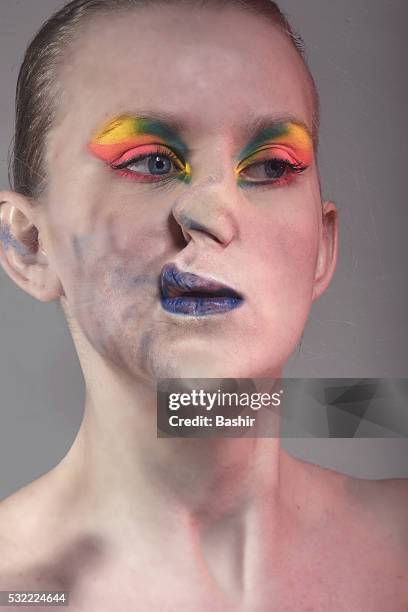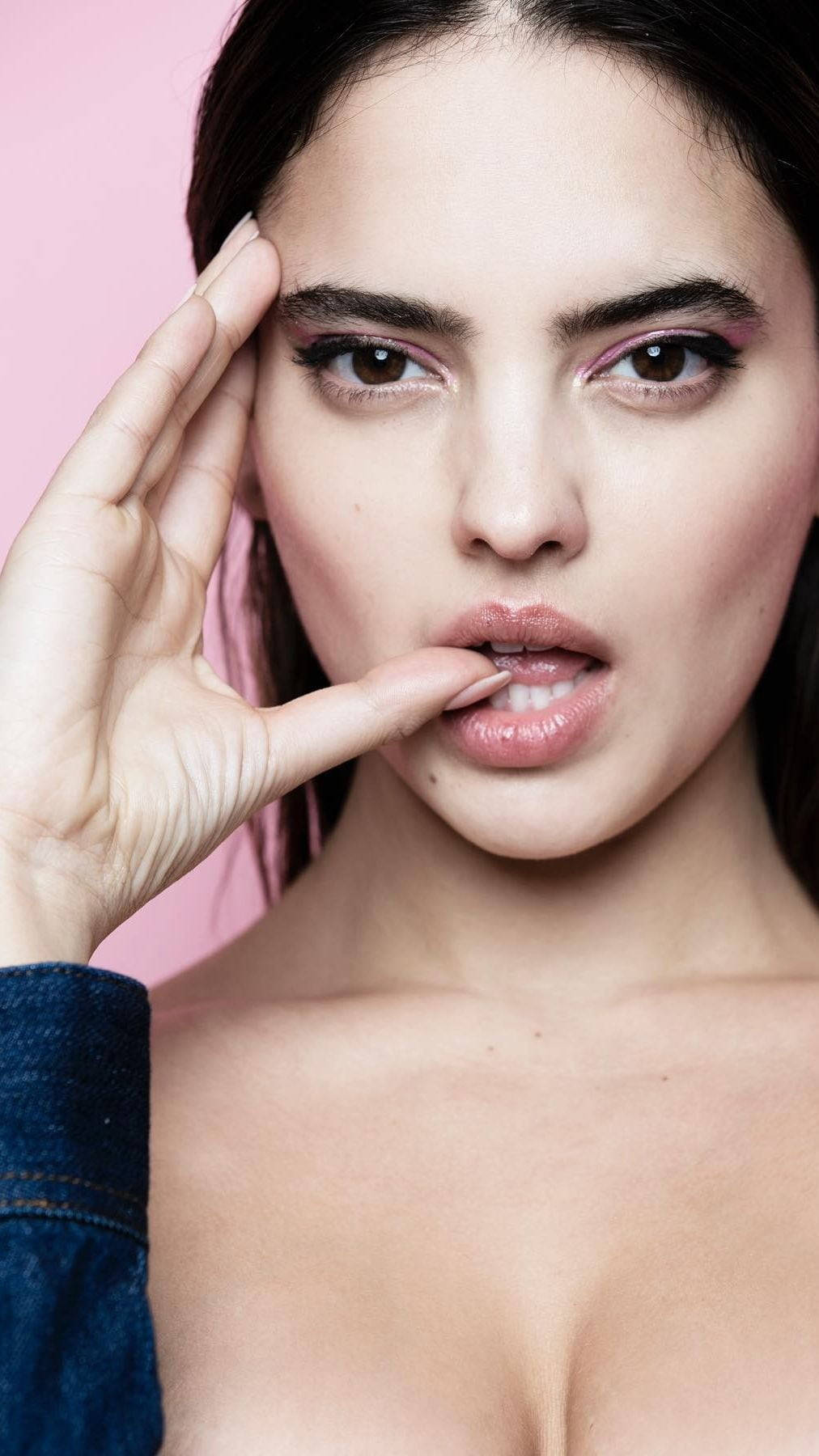Is the 'scrunch face' the new selfie sensation, or just another fleeting trend? It appears the Gen Z generation has swiftly discarded the duck face, embracing a more... scrunched alternative in the realm of digital self-expression.
The rise of the scrunch face, a facial expression characterized by a furrowed brow, slightly scrunched nose, and often pursed lips, has taken social media by storm. From TikTok to Instagram, this unique pose is rapidly gaining traction, particularly among younger users. It's a fascinating shift in how we present ourselves online, a move away from the perceived artifice of previous generations' selfie styles. The scrunch face, with its air of relatability and playful charm, has captivated a digital audience eager to embrace authenticity, or at least, a performative version of it. This isn't just a superficial change; it signifies a possible evolution in online identity and the ways young people choose to showcase themselves.
| Attribute | Details |
|---|---|
| Name/Term | Scrunch Face |
| Description | A facial expression characterized by a furrowed brow, slightly scrunched nose, and often pursed lips, commonly used in selfies and videos. |
| Origin | Emerged as a popular pose among Generation Z users on platforms like TikTok, Instagram, and BeReal. |
| Popularity | Gained significant traction and widespread use, replacing the duck face as a prominent selfie trend. |
| Platforms | Primarily found on social media platforms, including TikTok, Instagram, BeReal, and other visual-centric sites. |
| Cultural Significance | Represents a shift in selfie culture, possibly indicating a move towards perceived authenticity and relatability in online self-presentation. |
| Influencers/Advocates | Addison Rae, among others, has been identified as a popularizer of the scrunch face. |
| Related Terms | TikTok Face (as coined by Vox), other poses and expressions favored by Gen Z on social media. |
| Year of Prominence | 2020 (as noted by Vox) and continuing |
| Notable Mentions |
|
The trend's origins can be traced to the ever-evolving landscape of social media. The scrunch face wasn't born overnight; it evolved gradually, gaining momentum through organic usage and the amplification of influencers and everyday users alike. The ease with which it can be replicated, combined with its perceived sense of approachability, has accelerated its spread. The scrunch face offers a relatable alternative, a form of self-expression that leans into imperfections, something many young people find refreshing in a world often dominated by curated images.
TikTok, in particular, has proven to be a fertile ground for the scrunch face's proliferation. The platform's short-form video format, coupled with its emphasis on user-generated content, has allowed the scrunch face to flourish. Videos showcasing the expression are now commonplace, with hashtags like #scrunchface and #scrunch_face racking up millions of views. These platforms facilitate the rapid dissemination of trends, creating a feedback loop where popularity breeds more popularity. The algorithms work to propel content that resonates with users, and the scrunch face, with its seemingly effortless appeal, has clearly found its audience.
This trend extends beyond mere imitation; the scrunch face encapsulates an evolving understanding of digital identity. It's a move away from the sometimes-artificial constructs that dominated early selfie culture. The duck face, with its association with perceived vanity and superficiality, is seen by many Gen Z users as outdated. The scrunch face, on the other hand, can be seen as a rejection of that polished, often-unrealistic presentation. It's a signal of a generation that perhaps values authenticity, or at least, a performative version of it, more than previous generations. This could be interpreted as a desire for genuine connection in an increasingly digital world.
The scrunch face also reflects a growing desire for humor and lightheartedness online. In a world that can often feel overwhelming, the scrunch face offers a moment of levity. It's a way to inject personality and playfulness into the often-serious realm of social media. Many users utilize it to convey amusement, surprise, or a sense of self-awareness. The ability to laugh at oneself, or to showcase a less-than-perfect expression, can be a powerful way to build connection and create a sense of shared experience. It's a deliberate embrace of imperfection, a rejection of the relentless pressure to appear flawless.
While the scrunch face might seem like a fleeting trend, its significance lies in what it reveals about the current digital landscape. The scrunch face may seem insignificant, but consider its larger implications. The shift from the duck face to the scrunch face is more than just a superficial change; it mirrors shifts in online culture and self-presentation. It points to a generation that is forging its own identity and rewriting the rules of online engagement. This evolution underscores the dynamic nature of social media and its power to shape the way we see ourselves and interact with others.
The evolution of the scrunch face also shows how quickly trends can emerge and disappear in the digital sphere. Platforms like TikTok, with their massive user bases and short attention spans, create an environment where trends can go viral and fade just as quickly. What's popular today might be old news tomorrow. This rapid cycle of trends is a defining feature of social media, constantly pushing the boundaries of self-expression. The constant influx of new content keeps the online world dynamic and requires creators to continuously innovate to stay relevant.
The scrunch face is not just about a specific expression; it's part of a larger phenomenon known as TikTok Face, a collection of poses and facial expressions that have gained prominence on the platform. As noted in a 2020 article by Vox, this phenomenon highlights the unique ways in which Gen Z users communicate and present themselves online. These distinctive behaviors have become associated with a specific aesthetic and mode of interaction. The TikTok Face encompasses a range of different expressions and gestures, each with its own nuances and meanings. It serves as a sort of visual language, easily understood by those immersed in the same digital culture.
Addison Rae, among others, has been identified as a prominent figure in popularizing the scrunch face. Her influence demonstrates the power of social media stars in shaping trends and influencing online behavior. These influencers have substantial followings, and their choices regarding self-presentation can have a ripple effect. The way they present themselves, down to their facial expressions, can shape the aesthetic preferences of their followers. Their ability to set the standard for a generation underscores the role of online celebrities in cultural trends.
The scrunch face, in its simplicity, exemplifies how social media trends can be both inclusive and exclusive. Anyone can scrunch their face, democratizing the experience of participating in the trend. However, understanding the context, the history, and the cultural connotations of this expression requires familiarity with the specific online spaces where it originated. This creates an insider/outsider dynamic, as some users may be in on the joke, while others may remain unaware of the meaning. This distinction is crucial to understanding how trends shape online communities and create a sense of belonging.
The longevity of the scrunch face remains to be seen. But it's a potent symbol of the ever-changing landscape of online self-expression. This trend embodies Gen Z's unique approach to the digital world and its embrace of authenticity. As the online world continues to evolve, it's certain that new trends will emerge, and the scrunch face will likely be succeeded by other expressions. Understanding these trends provides valuable insights into the motivations, values, and aspirations of the younger generation. Ultimately, the scrunch face is more than a facial expression; it is a reflection of the complex relationship between youth and the digital age.



